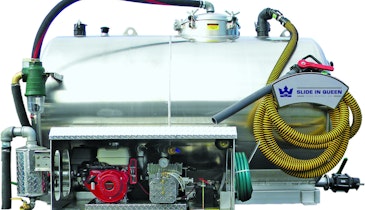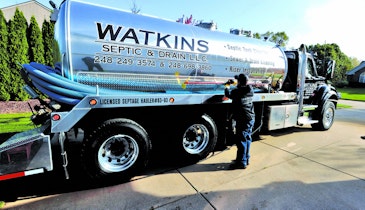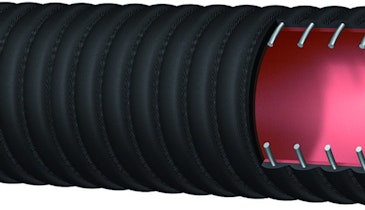Richard Davis of Quick Response Septic Service, Grass Valley, Calif., sent in these photos of his 2000 GMC Topkick vacuum truck, which suffered a collapsed tank while performing emergency service for the city of Roseville in northern California. Working with about 30 other pumpers to prevent sewage from going into a nearby stream, Davis was on flat ground, with a hose in a manhole taking on sewage when he heard a loud bang. He returned to the truck to find major damage. The 2,000-gallon steel tank with two baffles had to be scrapped. Davis is replacing it with a tank from Lely Manufacturing Inc., that he had removed from another truck.
The implosion was traced to a non-functioning vacuum relief valve attached to his 236-cfm Battioni pump. Davis said all the pumpers at the scene shut down their trucks and checked their vacuum relief valves before continuing with the job. After the mishap, Davis replaced the vacuum relief valves on his fleet of six trucks.
“The moral of the story is to make sure you check the vacuum relief valve,’’ Davis said, hoping his advice will save other contractors from the same fate. The bill to replace the tank and put the truck back in service will be about $15,000, Davis said, while the cost of a vacuum relief valve is about $40. He doesn’t expect any insurance to cover the damage. “It’s smart to replace the vacuum relief valve every two or three years. And it sure costs a lot less than if you have a problem,’’ he said.





